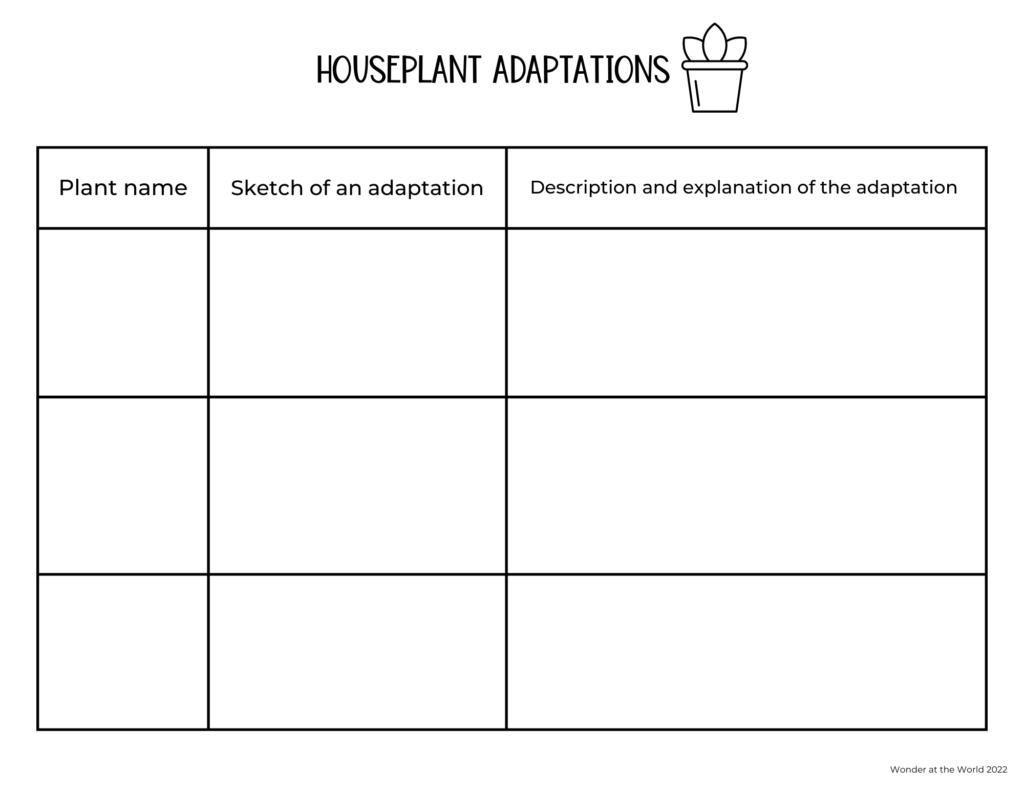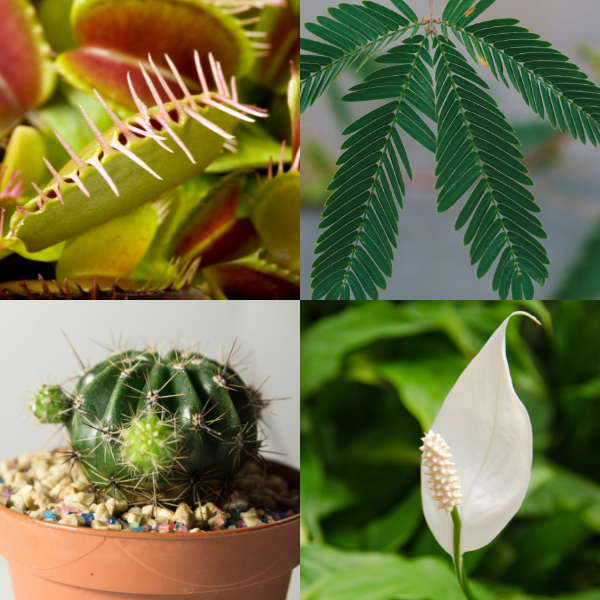How can you use houseplants to teach adaptation? The world of plants provides some interesting examples of adaptations in plants. If you want to study some of them first-hand without needing to travel to a rainforest or desert, houseplants are what you need! This blog post will give you ideas for an adaptation lesson with common houseplants, giving pupils the opportunity for hands-on study.
Planning your lesson – some tips
Use your green-fingered friends and colleagues as a source of plants. You’ll only need them for a short period of time so care shouldn’t be an issue.
Give plenty of opportunity for observation of the plants and idea generation before recording anything – some adaptations may be more obvious than others.
Have hands lenses ready for observation. For recording, you may wish to use the sheet below. Click the link below to download it for free.

Houseplants you could use for a plants adaptation lesson
The plant examples below are ideas to get you started. You can base your lesson on what you available.
Succulents
I have a house full of succulents because they’re SO easy to keep without the need to water them regularly. Their thick waxy leaves are suited to water storage in dry habitats, and children can observe the difference compared with your local vegetation.
Cacti
In addition to protection from animals, the spines of a cactus don’t lose water through evaporation as leaves do. The spines also reduce airflow around the plant, reducing evaporation. Children may also notice that the cacti have thick stems – another adaptation for conserving water.

Mimosa
I remember having a Mimosa plant as a kid and being fascinated with the way the leaves curled up when touched. Give children soft paintbrushes to gently tickle the Mimosa leaves and see what happens! In the wild, the movement of leaves can discourage munching insects and other animals from hanging around for too long.
Peace lily and Anthurium
If you’re going to use this one, make sure it’s in flower. The large petal-like structure that’s often mistaken for a flower is actually a spathe (a modified leaf that protects the spike of tiny flowers underneath). Peace lilies can be toxic to children if consumed so are less suitable for younger students.
Waterlilies
Although not strictly a house plant, they can be obtained from a garden pond and a water plant is a good for comparison. The large, flat leaves are adapted to floating on the pond surface. A long, flexible stem helps them to move with the water without breaking.
Plants with hairy leaves
Some plant species have leaves or stems covered in fuzz. These tiny hairs can be a way of deterring insect attack, or for conserving water. Look out for begonias and purple passion amongst others.
Venus fly trap
If you can get a fly trap, you’ll get massive brownie points from your class! These carnivorous plants have hinged leaves covered with tiny hairs that cause the trap to shut when trapped. Fun fact: The first touch doesn’t usually stimulate closure to avoid the energy of shutting when it’s a false alarm.
Once a bug is trapped inside, the plant digests it over several days. A very different way of getting energy!
Roses
Roses are insect-pollinated with bright scented flowers to attract them. However, there are some animals that don’t want to attract – their thorny stems and prickly leaves are a good deterrent.
Follow up activities
- Design a plant that… Give children a prompt to design a plant adapted to certain conditions. For example, a plant that grows in nutrient-poor soil, is pollinated by butterflies and is adapted to repel herbivores.
- Climate change discussion. Think about the habitats the houseplants would live in in the wild. Could those habitats be affected by climate change (e.g. change in temperature or rainfall). Do you think the plants could survive changes?
- Selective breeding. Which traits might house plant and flower sellers particularly want to breed?

